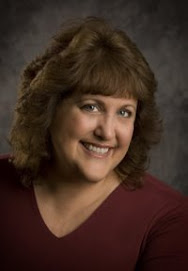 A friend of mine posted on his Facebook author page that he was looking for ideas for posts on novel writing. Running out of ideas is a common problem for people who post a lot (or those of us who are just plain stumped when it comes time to write a post). Since blogging is an important component of an author’s promotional mix, it’s crucial to keep the topics flowing. So, what can authors do when the well runs dry? Here are my suggestions:
A friend of mine posted on his Facebook author page that he was looking for ideas for posts on novel writing. Running out of ideas is a common problem for people who post a lot (or those of us who are just plain stumped when it comes time to write a post). Since blogging is an important component of an author’s promotional mix, it’s crucial to keep the topics flowing. So, what can authors do when the well runs dry? Here are my suggestions:1. Write about what's happening with you and your writing – your writing process, your writing group, conferences you're going to (or would like to attend), your thoughts on writing, your status with your latest book, what you’re reading, what you’d like to be reading, writers who inspire you, etc.
2. If you’re comfortable with sharing your personal life, intermix your writing posts with a few personal anecdotes about what’s happening in your life. Sometimes an event in your day-to-day life will trigger thoughts or ideas that work their way into your written work; share those.
3. Discuss your writing hopes and dreams, how you plan for the future, your vision for yourself as a writer. Other writers are always interested in future trends
4. If you’re an expert in a field, share tips on that subject area.
5. Post a photo or a quote and describe why it pleases or inspires you.
6. Write responses to articles on writing. You can post them and then comment on them, or just share your thoughts about them (reference them with a link).
7. Use Twitter and LinkedIn to get ideas for posts. You can build up your Twitter lists by following other writers (there are thousands of them out there!). If you're not sure who to follow, go to the pages of people you follow who have a lot of followers and choose from their lists. Or check the Twitter hashtags for writing ideas.
8. Google any topic on writing and you're bound to find lots of links on subjects that will strike a chord with you. Give your followers your take on those topics, or start a thread about a subject you find in your searches.
9. Check out other writers’ web and blogsites and see what topics are trending there. Likewise, look at social media, networking, and publishing sites that focus on reading and writing (Goodreads, AbsoluteWrite, Publetariat, BookTrib, The Passive Voice, etc.)
10. Finally, you don't always have to reinvent the wheel. If you’ve been blogging for a while and have posts that are popular or followed a lot, post them again, with updates and comments on what others have said.








